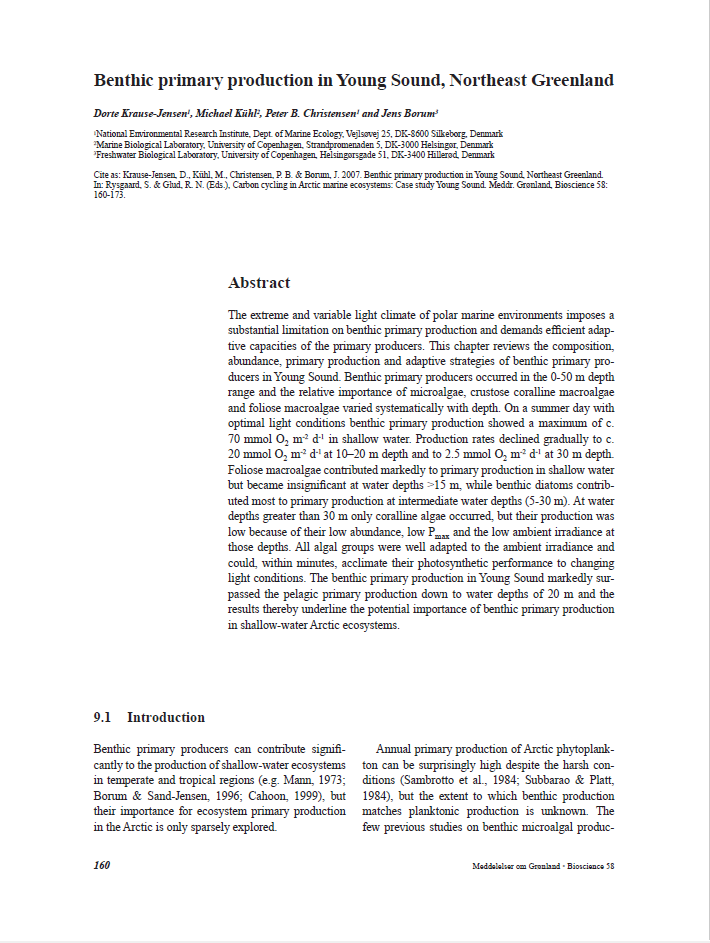Benthic primary production in Young Sound, Northeast Greenland
DOI:
https://doi.org/10.7146/mogbiosci.v58.142648Abstract
The extreme and variable light climate of polar marine environments imposes a substantial limitation on benthic primary production and demands efficient adaptive capacities of the primary producers. This chapter reviews the composition, abundance, primary production and adaptive strategies of benthic primary producers in Young Sound. Benthic primary producers occurred in the 0-50 m depth range and the relative importance of microalgae, crustose coralline macroalgae and foliose macroalgae varied systematically with depth. On a summer day with optimal light conditions benthic primary production showed a maximum of c.
70 mmol O2 m-2 d-1 in shallow water. Production rates declined gradually to c. 20 mmol O2 m-2 d-1at 10–20 m depth and to 2.5 mmol O2 m-2 d-1 at 30 m depth.
Foliose macroalgae contributed markedly to primary production in shallow water but became insignificant at water depths >15 m, while benthic diatoms contributed most to primary production at intermediate water depths (5-30 m). At water depths greater than 30 m only coralline algae occurred, but their production was low because of their low abundance, low Pmax and the low ambient irradiance at those depths. All algal groups were well adapted to the ambient irradiance and could, within minutes, acclimate their photosynthetic performance to changing light conditions. The benthic primary production in Young Sound markedly surpassed the pelagic primary production down to water depths of 20 m and the results thereby underline the potential importance of benthic primary production in shallow-water Arctic ecosystems.

Downloads
Published
Issue
Section
License
Coypyright by the authors and the Commision for Scientific Research in Greenland / Danish Polar Center/Museum Tusculanum Press as indicated in the individual volumes. No parts of the publications may be reproduced in any form without the written permission by the copyright owners.

